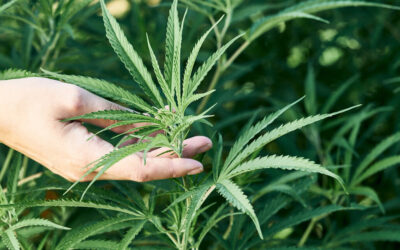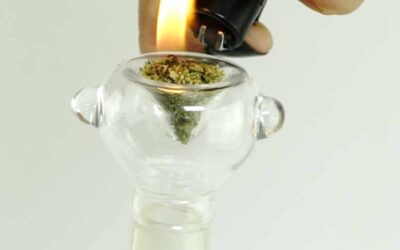
Medical vs Recreational Cannabis
Cannabis, in both its medical and recreational forms, has gained widespread attention, but the two types serve very different purposes and are treated differently by regulatory bodies. While both come from the same plant, their uses, chemical makeup, and legal requirements vary. In this guide, we’ll explore the differences between medical cannabis and recreational cannabis to help you make informed decisions based on your needs.
Purpose: Therapeutic vs. Enjoyment
Medical Cannabis is prescribed by healthcare professionals to treat a variety of medical conditions. It is typically recommended for managing chronic pain, epilepsy, multiple sclerosis, PTSD, anxiety, and other health conditions. Medical cannabis is specially formulated to focus on symptom relief rather than psychoactive effects. Often, this involves using strains with higher levels of CBD (cannabidiol), a compound known for its therapeutic benefits without inducing a “high.”
For instance, patients suffering from chemotherapy-induced nausea or muscle spasms due to multiple sclerosis may find relief through medical cannabis specifically designed to target those symptoms
Recreational Cannabis, by contrast, is consumed purely for its psychoactive effects, which are mainly driven by THC (tetrahydrocannabinol), the compound responsible for the “high.” People use recreational cannabis to relax, enhance their mood, or socialize. Unlike medical cannabis, which is about improving the quality of life for medical patients, recreational cannabis is about enjoyment and leisure
Legal Requirements and Access
The legal pathway to obtaining cannabis varies greatly between medical and recreational use:
Medical Cannabis: To access medical cannabis, patients must be diagnosed with a qualifying condition by a healthcare provider. After receiving a recommendation, they must obtain a medical marijuana card, which allows them to purchase products from medical dispensaries. The list of qualifying conditions can vary by state, but common ones include chronic pain, cancer, HIV/AIDS, glaucoma, and epilepsy. In many states, patients under 21 years of age can legally use medical cannabis if they meet the required criteria, often with the assistance of a legal guardian.
Recreational Cannabis: In states where recreational cannabis is legal, adults over the age of 21 can buy cannabis from licensed dispensaries without a medical recommendation. Recreational users need only show a government-issued ID as proof of age, and purchases are typically limited to a certain amount, which varies by state. For instance, recreational users in California are limited to buying one ounce of flower or 8 grams of concentrate at a time.
THC vs. CBD: Therapeutic vs. Psychoactive Effects
THC and CBD are the two most prominent cannabinoids in cannabis, and their ratio greatly influences the effects of a cannabis product:
Medical Cannabis: Often has a higher CBD content relative to THC. CBD does not produce a “high” but instead provides numerous therapeutic effects, such as reducing inflammation, controlling seizures, and alleviating anxiety. This makes medical cannabis effective for treating a wide range of symptoms while keeping patients alert and functional throughout the day. Some medical products also combine THC and CBD to provide synergistic effects, where CBD helps mitigate some of the psychoactive effects of THC, offering relief without heavy intoxication.
Recreational Cannabis: Is usually bred for high THC levels, as THC is what delivers the psychoactive experience. While some recreational products include CBD, the emphasis is more on achieving a strong “high” rather than focusing on therapeutic benefits.
Product Composition and Potency
A significant difference between medical and recreational cannabis lies in product composition and potency:
Medical Cannabis: Products in the medical category are often designed with a higher ratio of CBD to THC. CBD is known for its anti-inflammatory, anti-anxiety, and anti-seizure properties, making it a key component in treating conditions like epilepsy and chronic pain. Medical cannabis products also tend to be more balanced in terms of cannabinoids, offering relief with fewer psychoactive effects.
Medical cannabis must also meet stricter quality control standards. Products are carefully tested for contaminants like mould, heavy metals, and pesticides, which is crucial for patients with weakened immune systems or chronic illnesses.
Recreational Cannabis: In contrast, recreational products are often high in THC, with some strains exceeding 30% THC content, particularly for users seeking a potent psychoactive effect. Recreational users might prefer higher THC levels for the relaxation, euphoria, or creativity it provides. However, this comes with a higher risk of adverse effects like anxiety or paranoia in new or inexperienced users.
Price and Taxes: Medical is Cheaper
A key difference between the two types of cannabis lies in price and taxes:
Medical Cannabis: Medical patients typically pay lower prices due to tax exemptions. Many states waive sales and excise taxes for medical cannabis, making it significantly more affordable for those who need it for ongoing treatment. For example, in California, medical patients often pay a tax rate of 15-20%, while recreational users might pay upwards of 38%, depending on location.
Recreational Cannabis: Recreational users are subject to higher taxes, which include sales tax, local tax, and excise tax. These taxes can drive up the cost of recreational products significantly. This makes recreational cannabis more expensive overall compared to medical cannabis.
Purchase and Possession Limits
Legal restrictions on how much cannabis can be purchased or possessed at a time vary between medical and recreational use:
Medical Patients: Usually have higher purchase limits to ensure they have enough for ongoing treatment. This is especially true for patients with chronic conditions who may require larger quantities to manage their symptoms.
Recreational Users: Are typically subject to stricter purchase limits. In many states, recreational users can only buy or possess a limited amount of cannabis at a time. These limits are designed to prevent large-scale distribution or resale.
Product Variety and Availability
Product availability can also differ between medical and recreational dispensaries:
Medical Cannabis: Medical dispensaries offer a wide range of products, including tinctures, capsules, edibles, and topical creams, all designed to target specific medical symptoms. Many of these products are formulated for precise dosing and consistent therapeutic effects.
Recreational Cannabis: Offers a broader variety of products, but these are often designed for users looking for high-potency experiences. While recreational users can access similar products—such as edibles, concentrates, and vape cartridges—their primary purpose is typically enjoyment, not treatment.
Understanding the Key Differences
Medical cannabis and recreational cannabis may come from the same plant, but their purposes, compositions, legal regulations, and prices are vastly different. Medical cannabis is designed for therapeutic use, featuring balanced cannabinoid profiles and higher quality control standards. It’s also more affordable due to lower taxes and greater purchase limits for patients. Recreational cannabis, however, is consumed for its psychoactive effects, and while it’s more accessible in legalised states, it comes with higher costs and stricter possession limits.
Whether you’re seeking symptom relief or simply a relaxing high, understanding these key differences will help you navigate the complex cannabis landscape more effectively.







































































